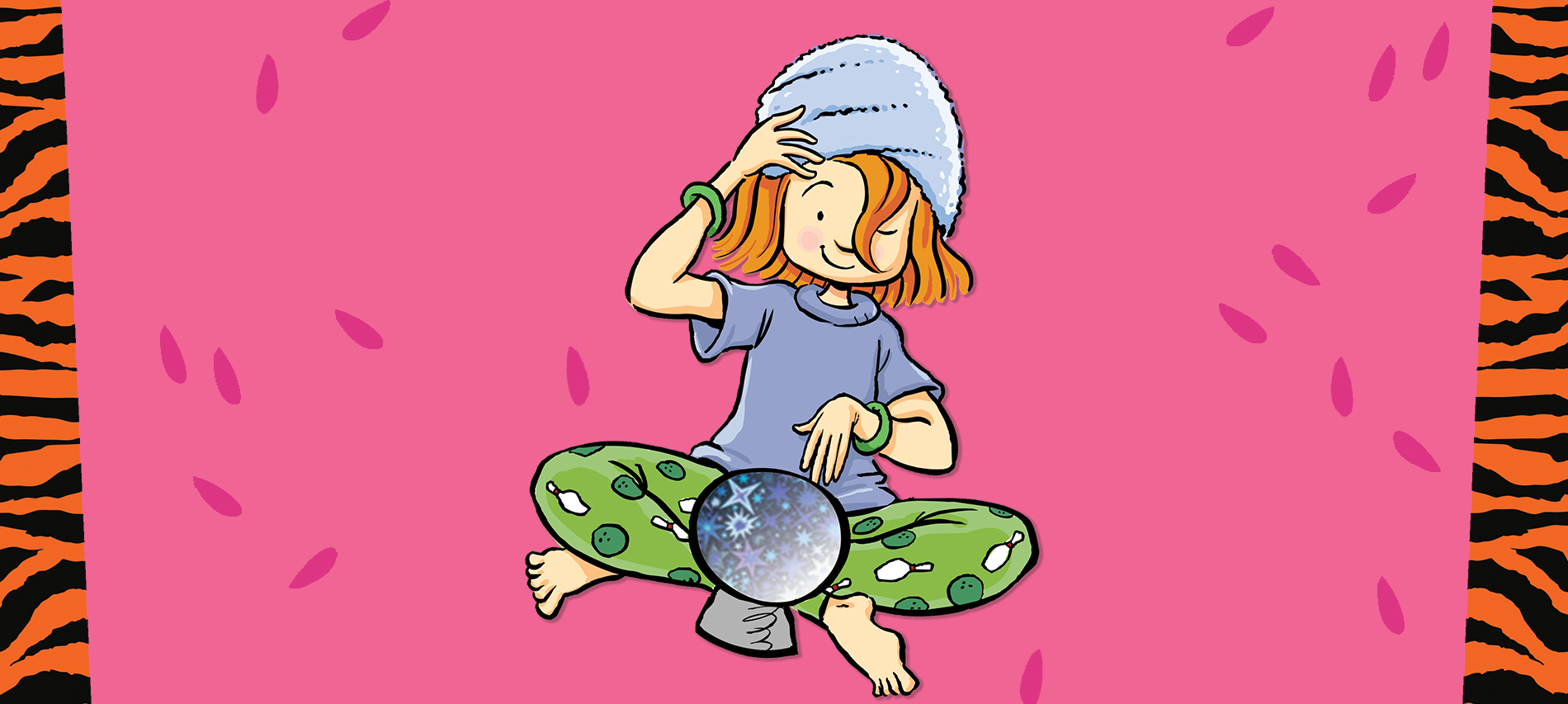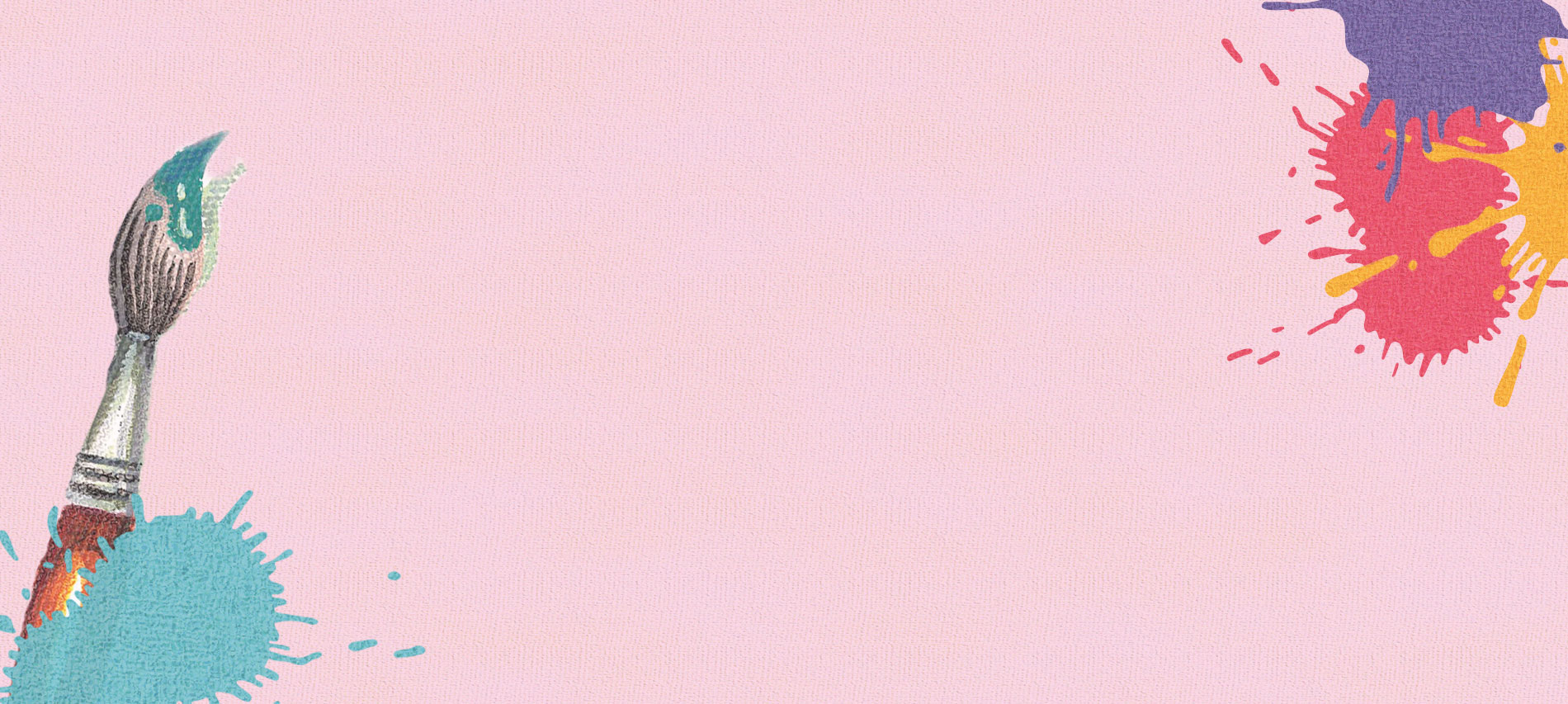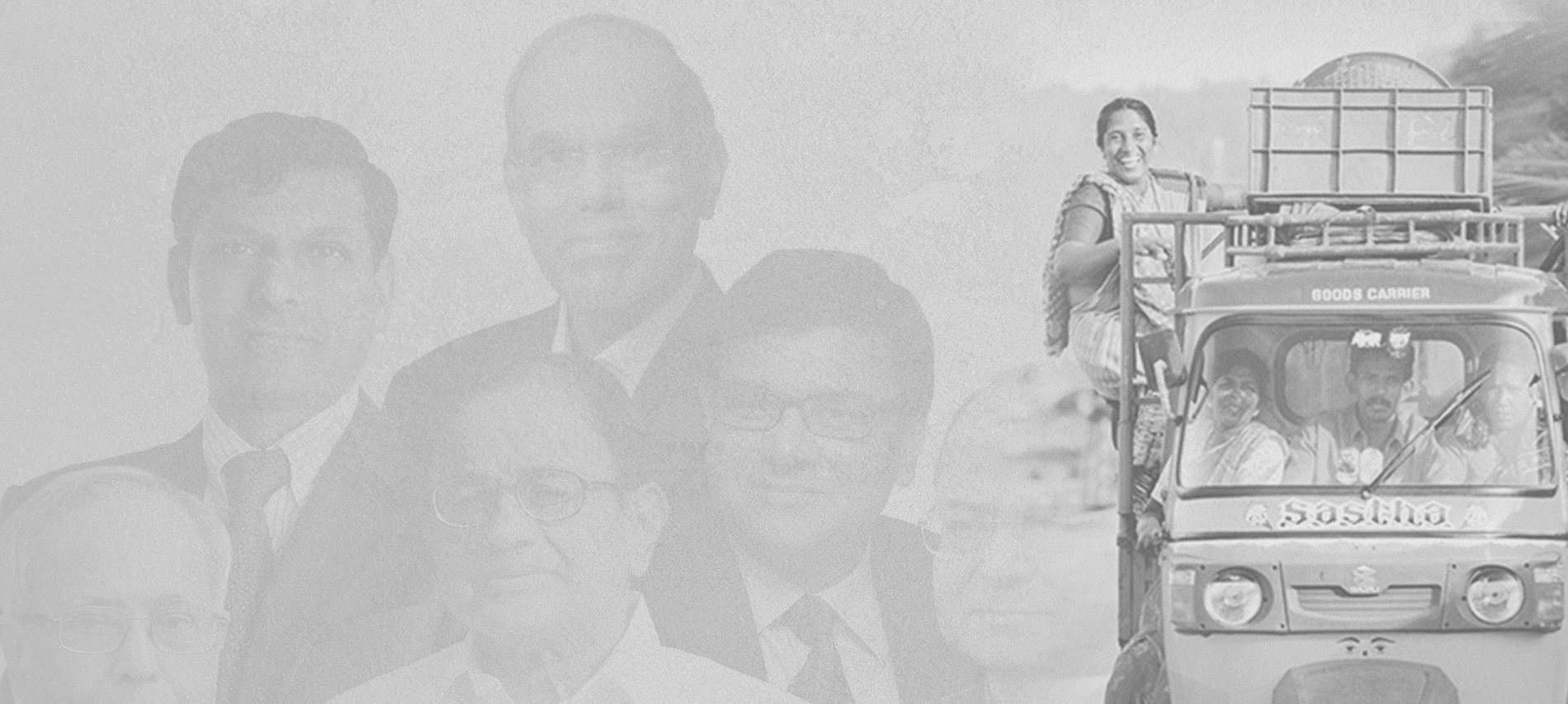Judy Moody, from the international bestselling series created by Megan McDonald, is a third grader with plenty of attitude and a mood for every occasion. You know she is funny, intelligent and caring, but here are six things we bet you don’t know about Judy Moody.
Get to know them here.
——————————







Tag: Penguin Random House
Ramachandra Guha and some thoughts on Politics in India
Now based in Bangalore, Ramachandra Guha has previously taught at Yale, Stanford, Oslo, and the London School of Economics. His books include a collection of essays, Patriots and Partisans, Savaging the Civilized: Verrier Elwin, His Tribals, and India (1999) and Democrats and Dissenters. Guha’s awards include the Leopold-Hidy Prize of the American Society of Environmental History, the Sahitya Akademi Award, and the Padma Bhushan. His books and essays have been translated into more than twenty languages. In 2008, and again in 2013, Guha featured on Prospect Magazine’s list of the world’s most influential thinkers.
On his 60th birthday, we celebrate this iconic writer with his polemic quotes on Politics & India.
——————————






It’s Time to Leaf Through Our April BookShelf
April 14th celebrated as Ambedkar Jayanti – an annual festival which commemorates the memory of the national leader, Dr. B.R. Ambedkar who was a champion for Dalit rights and an icon for the downtrodden.
Here is a collection of books that highlight Caste and its injustices that formulated many of the past & present deep-rooted fissures in the country.
——————————-
Ambedkar: Towards an Enlightened India by Gail Omvedt  In this concise biography, Gail Omvedt, presents Ambedkar’s struggle to be educated in order to overcome the stigma of untouchability. The biography puts the man and his times in context by exploring Ambedkar as —a scholar, lawyer, an economist, religious leader and an intellectual. The book aims to explain to a new generation of readers how Ambedkar became a national leader and an icon of the dispossessed.
In this concise biography, Gail Omvedt, presents Ambedkar’s struggle to be educated in order to overcome the stigma of untouchability. The biography puts the man and his times in context by exploring Ambedkar as —a scholar, lawyer, an economist, religious leader and an intellectual. The book aims to explain to a new generation of readers how Ambedkar became a national leader and an icon of the dispossessed.
Interrogating Caste : Understanding Hierarchy and Difference in Indian society by Dipankar Gupta
 The caste system has conventionally been perceived by scholars as a hierarchy based on the opposition of purity and pollution. Challenging this position, leading sociologist Dipankar Gupta argues that any notion of a fixed hierarchy is arbitrary. It is, in fact, the mechanics of power—economic and political, that set the ground rules for caste behaviour. Provocative and finely argued, Interrogating Caste is a remarkable work that provides fresh insight into caste as a social, political and economic reality.
The caste system has conventionally been perceived by scholars as a hierarchy based on the opposition of purity and pollution. Challenging this position, leading sociologist Dipankar Gupta argues that any notion of a fixed hierarchy is arbitrary. It is, in fact, the mechanics of power—economic and political, that set the ground rules for caste behaviour. Provocative and finely argued, Interrogating Caste is a remarkable work that provides fresh insight into caste as a social, political and economic reality.
Unseen: The Truth about India’s Manual Scavengers by Reenu Talwar, Vandana Singh
 In many parts of the country, the inhuman practice of manual scavenging continues to thrive in spite of a law banning it. Moreover, the people forced to carry out this degrading work remain invisible to the rest of us, pushed to the margins of society without any recourse to help or hope. Award-winning journalist Bhasha Singh turns the spotlight on this ignored community. In Unseen, based on over a decade of research, she unveils the horrific plight of manual scavengers across eleven states in the country.
In many parts of the country, the inhuman practice of manual scavenging continues to thrive in spite of a law banning it. Moreover, the people forced to carry out this degrading work remain invisible to the rest of us, pushed to the margins of society without any recourse to help or hope. Award-winning journalist Bhasha Singh turns the spotlight on this ignored community. In Unseen, based on over a decade of research, she unveils the horrific plight of manual scavengers across eleven states in the country.
Caste: Its 20th Century Avatar by MN Srinivas
 As India attempts to modernize and arrive into the twenty-first century, the issue of caste takes an overwhelming importance. The essays in this volume, each authored by an expert on the subject, include a stimulating assessment of the role of women in perpetuating caste; incisive analyses of the relationship between caste and the economy and between caste and Hinduism and other related topics.
As India attempts to modernize and arrive into the twenty-first century, the issue of caste takes an overwhelming importance. The essays in this volume, each authored by an expert on the subject, include a stimulating assessment of the role of women in perpetuating caste; incisive analyses of the relationship between caste and the economy and between caste and Hinduism and other related topics.
Coolie and Untouchable by Mulk Raj Anand

 Coolie portrays the picaresque adventures of Munoo, a young boy forced to leave his village to fend for himself and discover the world. His journey takes him far from home to cities like Bombay and Shimla, sweating as servant, factory-worker and rickshaw driver. It is a fight for survival that illuminates, with raw immediacy, the grim fate of the masses in pre-Partition India.
Coolie portrays the picaresque adventures of Munoo, a young boy forced to leave his village to fend for himself and discover the world. His journey takes him far from home to cities like Bombay and Shimla, sweating as servant, factory-worker and rickshaw driver. It is a fight for survival that illuminates, with raw immediacy, the grim fate of the masses in pre-Partition India.
In Untouchable, Bakha is a young man, proud and even attractive, yet nonetheless he is an outcast in India’s caste system: an Untouchable. This novel describes a day in the life of Bakha, sweeper and toilet-cleaner, as he searches for a meaning to the tragic existence he has been born into – and comes to an unexpected conclusion.
Mulk Raj Anand is among the twentieth century’s finest Indian novelists writing in English.
The Taming of Women by P. Sivakami

As Anandhayi gives birth to her fifth child downstairs, upstairs her husband Periyannan sleeps with a woman he has summoned to spend the night with him. Women of many generations live in that house at the end of the road and the tyrannical and charismatic Periyannan is always trying to bring them under his control. Voracious in his appetite, power and sex, Periyannan is a domineering antagonist to the tender but tenacious Anandhayi. The book is guaranteed to leave the reader simultaneously amused and devastated.
Dalit Millionaires: 15 Inspiring Stories by Milind Khandekar Reenu Talwar, Vandana Singh

The book documents the lives of fifteen people who never imagined affording one meal a day, they never dreamed of feeling the leather seats in a car and today all of them stand as sole owners of a fortune that will last for the next five generations. Milind Khandekar is determined to inspire people to pursue their way to riches. According to Khandekar, you don’t need ancestral properties, famous forefathers, family heirlooms or to be an heir to a million dollar worth fortune to be successful. All you need to do is dream to make it big.
Defying the Odds : The Rise of Dalit Entrepreneurs by Devesh Kapur, D. Shyam Babu & Chandra Bhan Prasad
 Defying the Odds profiles the phenomenal rise of twenty Dalit entrepreneurs, the few who through a combination of grit, ambition, hustle—and some luck—have managed to break through social, economic and practical barriers. These inspiring stories capture the difficult circumstances Dalits found themselves in as well as their extraordinary steadfastness, while also bringing light to the possibilities of entrepreneurship as a tool of social empowerment.
Defying the Odds profiles the phenomenal rise of twenty Dalit entrepreneurs, the few who through a combination of grit, ambition, hustle—and some luck—have managed to break through social, economic and practical barriers. These inspiring stories capture the difficult circumstances Dalits found themselves in as well as their extraordinary steadfastness, while also bringing light to the possibilities of entrepreneurship as a tool of social empowerment.
Behenji (on Mayawati) by Ajoy Bose
 Mayawati has changed the face of politics in India as a woman belonging to the most crushed community known to mankind, built her way through the heat and dust of elections to rule two hundred million people. Not only has she been the Chief Minister four times, but she has done so by overturning the established electoral traditions of a state that virtually invented modern Indian politics. With her in-your-face political style, unabashed display of accumulated wealth, she is, perhaps, the most enigmatic Indian politician for decades.
Mayawati has changed the face of politics in India as a woman belonging to the most crushed community known to mankind, built her way through the heat and dust of elections to rule two hundred million people. Not only has she been the Chief Minister four times, but she has done so by overturning the established electoral traditions of a state that virtually invented modern Indian politics. With her in-your-face political style, unabashed display of accumulated wealth, she is, perhaps, the most enigmatic Indian politician for decades.
Kanshiram: Leader of Dalits by Badri Narayan

Venerated as a dalit icon, Kanshiram is regarded as being next to Ambedkar today. This book illuminates Kanshiram’s journey, from his early years in rural Punjab to his launching BAMCEF, an umbrella organization uniting backward castes, scheduled tribes, dalits and minorities, and eventually the Bahujan Samaj Party in 1984. Narayan highlights the turn Kanshiram gave to Ambedkar s ideas. Unlike Ambedkar, who sought its annihilation, Kanshiram saw caste as a basis for forging a dalit identity and a source of political empowerment. Authoritative and insightful, this is a rare portrait of the man who changed the face of dalit society and, indeed, of Indian politics.
Nitish Kumar and the Rise of Bihar by Arun Sinha

The conventional wisdom in Bihar‘s political circles was that development did not win votes. Nitish Kumar challenged that assumption and changed the face of the state. Veteran journalist Arun Sinha tells the story of Nitish Kumar’s rise against the larger canvas of social and political upheaval in Bihar, exploring the emergent desire for equality that drove progressive movements from late 1960s onwards and brought about a regime change by the 1990s. After an initial association with Lalu Prasad Yadav, Nitish Kumar rejected identity politics, recognizing that Bihar had to transcend caste if it was to grow.
Savaging the Civilized by Ram Guha
 Verrier Elwin (1902-1964) was unquestionably the most influential non-official Englishman to live and work in twentieth-century India. Savaging the Civilized is both biography and history, an exploration through Elwin’s life of some of the great debates of the twentieth century: the future of development, cultural assimilation versus cultural difference, the political practice of postcolonial as opposed to colonial governments, and the moral practice of writers and intellectuals.
Verrier Elwin (1902-1964) was unquestionably the most influential non-official Englishman to live and work in twentieth-century India. Savaging the Civilized is both biography and history, an exploration through Elwin’s life of some of the great debates of the twentieth century: the future of development, cultural assimilation versus cultural difference, the political practice of postcolonial as opposed to colonial governments, and the moral practice of writers and intellectuals.
So, which book has made it to your reading list?

Undercover Princess by Connie Glynn – An Excerpt
Connie Glynn has always loved writing and wrote her first story when she was 6 with her mum at a typewriter acting as the scribe. It was at university that Connie started her hugely successful YouTube channel Noodlerella (named after her favourite food and favourite Disney princess). Her book, Undercover Princess is about a fairy tale obsessed Lottie Pumpkin who starting at the infamous Rosewood Hall, where she was not expecting to share a room with the Crown Princess of Maradova, Ellie Wolf. Lottie is thrust into the real world of royalty – a world filled with secrets, intrigue and betrayal.
Let’s read an excerpt from the book:
————————————————
Princess Eleanor Prudence Wolfson, sole heir of King Alexander Wolfson and next in line for the throne of Maradova, did not live in one of these spaces, nor was she one of these people, but she was in desperate need of both.
‘I am going to this school!’ Eleanor slammed the brochure on the table with a loud thwack, causing the cups of breakfast tea to wobble on top of their saucers.
Alexander Wolfson didn’t even look up from his newspaper to reply.
‘No,’ he said blankly.
‘I am next in line for the Maravish throne. I think the teeny-tiny decision of which school I attend is something I am capable of managing myself.’
Alexander looked up at his wife, Queen Matilde, who was sitting across the table from him.
She shrugged. ‘She does have a point, Alex,’ she said amiably, delicately dropping a lump of sugar into her teacup and stirring it slowly while stifling a smile.
This was not the parental solidarity King Alexander had been hoping for.
‘See?’ said Eleanor. ‘Even Mum agrees with me.’
Alexander remained firmly fixated on his newspaper, feigning an image of complete composure. He took a sip of tea.
‘ Edwina –’ he gestured to their maid – ‘would you kindly take the empty plates to the kitchen, please?’
‘Of course, Your Majesty.’ Edwina expertly stacked the crumb-covered trays and exited the dining hall with a skilled smoothness, her feet barely making a sound on the oak flooring. The large double doors closed behind her, creaking softly as she eased them shut.
Once Alexander was sure she was a reasonable distance down the hall, and safely away from any domestic outbursts, he looked back down at his newspaper and said, ‘My answer is no.’
Eleanor let out an exasperated screech and stamped her foot. ‘You could at least look at the brochure!’ she snapped, snatching the newspaper from her father’s fingertips.
Alexander was forced to look up at his daughter.
Eleanor had always been a challenging child. She was anything but a typical princess; she would take fiery political arguments and sneaking out to loud, rowdy concerts over mild polite conversation any day, and more than anything she despised elaborate formal functions – or at least she assumed she did, having refused to ever attend one. But she was smart, she was confident and she was passionate – and for Alexander that was all far more important than any of the traditional values expected of her. Although occasionally he did wish she’d watch her language around her grandparents.
As much as he wanted Eleanor to be happy and live a life free of the commitments of royalty, the fact remained that she would be queen one day and would eventually need to accept that responsibility. He was determined to find a way to make his daughter realize she could enjoy her royal obligations; something he’d had to learn himself when he was younger.
——–
‘What on earth are you wearing?’ Ollie’s sarcastic tone drifted into Lottie’s bedroom. He stood leaning against the door frame, his arms crossed as he watched Lottie pack up the last items in her room.
‘Ollie!’ Lottie’s hand rushed to her chest in shock at the sudden appearance of her best friend. ‘How did you get up here? And how many times do I have to tell you to knock?’ Lottie was huffing slightly from trying to squish down her suitcases. Ollie was fourteen, the same age as Lottie, yet even though he was taller than her he’d retained his baby face, which reminded her of soft-serve ice cream on the beach and other happy memories.
‘I had to sneak past the wicked witch. Did you know her skin’s turned green finally?’ Ollie said with a devilish smile.
Lottie giggled, but she couldn’t ignore his comment. She looked down at her outfit, brushing down her dress self- consciously. ‘And what exactly is wrong with my outfit?’ she said indignantly.
Ollie laughed, grinning at her with his signature cheeky smile. Clumps of dog hair dotted his jeans, a permanent feature that he never seemed to care about.
‘Isn’t it a little too fancy for the first day of school?’
‘Too fancy?!’ Lottie couldn’t believe he’d suggest something so ridiculous. ‘Nothing is too fancy for Rosewood Hall. I need to fit in. I can’t have my clothes making me an outcast on the first day.’
Lottie began picking at a non-existent spot on the collar of her dress. ‘Most of the students probably have their clothes tailor-made out of gold or something.’
Ollie casually strolled into the room, taking a seat on Lottie’s bed. He pursed his lips as he glanced around the bedroom. Usually so alive with Lottie’s special brand of handmade quirkiness, it was now stripped bare, everything she owned crammed into two pink suitcases.
‘Well,’ Ollie began, reaching into his pocket, ‘if you can take a moment off from worrying about what other people think of you . . .’ He pulled out a crumpled envelope and a worn-out Polaroid that Lottie recognized from his bedroom wall. ‘These are for you.’
Lottie reached out for them, but Ollie whipped his hand back.
‘You can’t open the letter until you’re on the train.’
Lottie nodded with an exasperated smile and he slowly placed both gifts in her hand. It was a photograph she’d seen thousands of times: the two of them at the beach, their noses covered in ice cream and beaming grins on both their greedy faces. Even though the colours had begun to fade to sepia, you could still see the tiara on Lottie’s head and the horns on Ollie’s. As children, the two had demanded to wear these fancy-dress items every day and everywhere. Ollie had declared he was the fairy Puck from Shakespeare’s A Midsummer Night’s Dream after they’d watched an open-air performance at the beach one evening. He’d been completely infatuated with all the mischief the character got away with and assumed he too could get away with being naughty so long as he was wearing his horns. Lottie’s tiara, on the other hand, had a less happy – go – lucky origin. Her thumb lingered over the accessory in the photo, a little pang striking her heart as she remembered the day she’d received it.
‘I’ll give you some time to say goodbye,’ he said, before effortlessly picking up both her suitcases and carrying them down the stairs to the car. When he was gone she thoughtfully placed Ollie’s gifts with the rest of her most important belongings, which she’d laid out on the now-bare bed so as not to forget them. She put each item into her handbag: first the weathered Polaroid and letter from Ollie, followed by her favourite sketchbook, her most loyal stuffed companion, Mr Truffles, a framed photo of her mother, Marguerite, in her graduation gown, and, finally – looking very out of place among the other objects – a crescent- moon tiara, her most valued possession. It had taken Lottie all of sixty minutes to pack her entire life into two pink suitcases, one denim backpack and a small over- shoulder handbag with a sturdy white strap. She looked over the now- empty room.
I did it, Mum, she thought. I got into Rosewood just like I promised.
Copyright © Connie Glynn, 2017

A Brush with Indian Art – Infographic Timeline of Indian Art
Indian art has evolved over centuries. Down the years, it has undergone tremendous change because of various factors, such as geography, culture, tradition, religion and politics. And, therefore, it is a patchwork of different forms, styles and themes.
Embark on a vivid journey on which you’ll learn about the origins and evolution of art in the country with Mamta Nainy in her book A Brush with Indian Art. With intricate black-and-white sketches by Aniruddha Mukerjee and stunning photographs of the most celebrated visuals across time, the book presents a rich primer on the different schools of art and the most significant movements in Indian art history.
Here is an infographic timeline of Indian art, as seen in the book.
—————–
Our Artsy Ancestors; Cave Paintings

The ‘A’ of Indian Art; Ajanta and Ellora

No Mini Feat; Mughal Miniatures

The Gilded Treasures; Tanjore Paintings

A Matter of Opinion; The Company School of Paintings and European Realism

Simple? Not Quite So!; The Bengal School of Art

Unfurling a Tradition; Kalighat Paintings

Art from Our Own Backyard

The New World; Meet the Moderns

What’s Next?; Meet the Contemporaries


7 Brilliant Facts from Tamal Bandhopadhyay’s Polemic Works
Tamal Bandyopadhyay, consulting editor at Mint, and adviser, strategy, at Bandhan Bank Ltd, is one of the most respected business journalists in India. He has kept a close watch on the financial sector for over two decades and has had a ringside view of the enormous changes in Indian finance and banking sectors.
With the opening of Bandhan Bank’s IPO in March where it has already raised Rs 1,342 crore, we shall be looking at 7 astounding facts from Tamal’s two polemic works: Bandhan: The Making of a Bank as well as From Lehman to Demonetization.
———————————————————-








Meet the Characters of Andaleeb Wajid’s latest, Twenty-nine Going on Thirty!
Andaleeb Wajid has published fifteen novels of which three are e-books. Andaleeb’s young adult novel When She Went Away was shortlisted for The Hindu Young World-GoodBooks Award 2017.
In her latest offering, Twenty-nine Going on Thirty, Priya is turning thirty and feeling overwhelmed by it. Living in Bengaluru with her best friend, Farida, and working as the social media head of a software firm, she’s feeling the weight of becoming a responsible thirty-year-old. Thankfully, Priya finds moral support in the fact that her friends Farida, Mini and Namrata are approaching the three-O milestone too.
Come, let’s meet these enigmatic characters.

Writing We That Are Young by Preti Taneja
Preti Taneja was born and grew up in the UK. She teaches writing in prisons and universities, and has worked with youth charities and in conflict and post conflict zones on minority and cultural rights. She is the co-founder of ERA Films, and of Visual Verse, the anthology of art and words. We That Are Young is her debut novel. It has been longlisted for the Desmond Elliot Prize and the Jhalak Prize, and shortlisted for the Republic of Consciousness Prize.
————————————
I arrived in New Delhi in January 2012, carrying my battered copy of Shakespeare’s King Lear and 300 A4 pages of double spaced text: the first drafts of Jivan and Gargi, and half of the Radha sections of something called We That Are Young. The writing wasn’t wonderful, I remember feeling that. It was hard to capture the different voices of my characters from London. I worked a lot in my local library. I felt like a ‘writer’ there, or at least, one in training. But I wasn’t really convincing myself on the page. Shakespeare’s language and plot were a magnetic puzzle – I wanted to work with them but not give in to them. The book had to stand on its own terms.
We That Are Young was never going to be a realist novel if it was to cleave to an epic play that is set in a no-place, a no-time. I wanted the book to be a dark carnival, hyper-real, with a polyphonic structure and modernist sensibility in the lines. India as a setting can handle elements of the real and the mythological, the psychoanalytical tradition of the West and a circular sense of time in ways other settings can’t. Yes, I had high hopes – but working from books and memory in England, it read like the first draft it clearly was.
The stakes were high: I had lost my mother to cancer when I was 28. I cared for her, for almost eight years with my family, till she died. What should I do with the inheritance she left me? It included courage, an example of sacrifice and risk-taking, as well as the security she had worked all her life to leave me. Two years after, I had got a job I loved, reporting on minority rights abuses for an NGO. I had the chance to travel and met people who trusted me with their stories. All of us sharply aware of the gulf between those who have freedom of movement, freedom of speech and those who do not, and the responsibilities that brings. I had a regular sandwich and coffee order in a nearby café. I commuted against the tide of city bankers streaming out of Liverpool Street station. Then I turned 30, and I still wasn’t doing the thing I had said I wanted to do all my life. Write fiction. I knew something had to change.
I enrolled on a night-class on the far side of the city, reached via the stopping Circle Line, East to West. I got a portfolio of stories together, and applied for a part-time Master’s in Creative Writing, which I could study for around my job. Two years later, I got my degree. I knew I wanted to carry on teaching and writing. I handed in my notice at work. The next day the email came: I had won full funding for a PhD. To work on We That Are Young.
Four months in, and that same instinct to jump made me pack up my life. I found a place to rent in Delhi via endless online searches, and paid the deposit without actually seeing it first. Then I told my Delhi family and friends that I was coming to write a book based on Shakespeare, set in India and was going to live in a rental for as long as I could afford it. ‘Whatever,’ they said. ‘Just come.’
I rediscovered my second city, the place I’ve been coming to since I was a child, on new terms. There was a fermenting energy; there was creativity; there was so much rage. There were important books I could not get in the UK about Indian politics, men’s fashion, women’s rights. I kept notebooks – there ended up being 15 in total – and made daily cuttings from national newspapers and magazines. Journalistic training learned crossing borders and working in different parts of the world and (in an early, misguided incarnation) as a very junior financial reporter now got me into the back kitchens of hotels, expensive parties, the outskirts of the city. Everyone wanted to tell me about what was wrong with India. Corruption, inequality, misogyny, ‘tradition,’ pollution, caste, expansion, city planning, waste, child abuse, the building of the metro, politics, safety. There was also a forward momentum among certain classes and in the media: long held injustices were being highlighted; new possibilities for equality were being claimed. So many people I met were working, had been working for years for this.
I would write every day. The rest of Radha, all of Jeet and most of Sita was drafted as the heat became brighter. Against family advice I travelled to Goa in April. I got sick from the humidity and had to come back early. And then, finally I went to Srinagar. A person I will never be able to thank enough, took me, silent and wrapped in shawls, into parts of the city he said that even most Srinagar people don’t go to. He introduced me to artisans, traders, chefs who talked to me about their work, and their daily routines, their hopes for their children. I stopped writing and just listened. I celebrated my 35th birthday with my partner on a houseboat overlooking the Dal: the stay was a gift from my godmother, my mother’s dearest friend.
I don’t believe writers think about their own process – how, when, what with – until they are asked to. For me, there were some simple imperatives. I was 35. I had taken a pay cut and tried to make a career change. I had to finish the book, get it published, and from that, apply for teaching jobs, perhaps write the next thing – that was the plan. Finishing became a kind of obsession, driven by the PhD submission deadline, funding running out, the need to sell the novel and seek paid work. With the 15 notebooks, press cuttings and a stack of other people’s novels and non-fiction from across India and the diaspora, I returned to my childhood home in June 2012. One more house move, and I finished the first full draft of my manuscript by December. Then my agent sent it out and I submitted my PhD.
I got the PhD. But, We That Are Young found no favour with London or Delhi publishing. The editors said, ‘ambitious,’ ‘clever,’ ‘brilliant idea’ and ‘powerful.’ There was, ‘too close to the bone’ and variations on, ‘Shakespeare? Really?’ Everyone, I mean, everyone said, ‘no.’
I could still research and teach, I thought. I could try for an academic career, if fiction was not to be. I began to focus on that. But writing We That Are Young was like being possessed by five crazy characters: they would not leave me alone. I had to keep working on the book. I believed that the India I had seen, and the way people told me it was changing, the way the world was changing, had to be expressed in fiction, now, and I still wanted to try to do it. When I started the novel, there was no Trump, no Brexit. It was the dog days of Congress in India. It was before a brutal rape on a Delhi bus became world news. But anyone really looking could see what was coming. The rise of the right-wing in different parts of the world. Wave after wave of protests against corruption, war, and for social justice were taking place. There was Rhodes Must Fall, and calls for the decolonisation of public spaces and curricula. People were documenting it via film and non-fiction. Some fiction writers were also getting through.
When I finally sold the fourth complete draft of my manuscript to the UK independent publisher Galley Beggar Press, it was January 2016.
There’s a lot more to this story, including the people close to me, who wouldn’t let me give up on my endless editing. One round of which was done on a rainy holiday in Wales, where I sat in my Tshirt, with my laptop in the hotel bath, pulling an all-nighter while my long-suffering partner slept next door. That was the version before Galley Beggar said yes. Then there was even more editing, intricate line stuff – it was thrilling but exhausting for all of us, and it went to the wire – it was finished just 10 days before the book actually became a real object in a warehouse, waiting to go out.
Writing is hard, editing is hard. It all feels less like creation, more like excavation. I often read as I write – returning to find segments of non-fiction that feed my stories, or fragments of poetry and other peoples’ writing – the kind that makes me work even harder at my own. We That Are Young is now in the bookshops and online, on people’s shelves and TBR piles, maybe in their bathrooms or beach bags. In India, its beautiful Penguin Random House hand-painted cover suggests water, hair, mehndi, bloodlines. My five crazy characters are partying without me – I saw them in the airport bookshop in Kolkata, in Delhi, Jaipur, in Bangalore; people send me pictures of them in Glasgow, Oxford, Norwich and Mumbai. They are talked about on YouTube and in blogs, just as they are in the world of the book. It’s meta. As Radha might say.
We That Are Young ends with a beginning, placing whatever might come next in the reader’s hands. Since I finished it, real world events, some positive – the #metoo and #TimesUp campaigns, the steps towards decriminalising gay sex (again), ongoing protests against child rape; some horrific – including those headline cases of sexual violence, water running out in cities, toxic smog, the rise of the religious right and its fascist ideology, go on: ‘machinations, hollowness, treachery, and all ruinous disorders…’ as Gloucester puts it, in King Lear.
Meanwhile, I am meant to be working on the next thing. I don’t know much about that, but I know the process won’t change. It will start with reading. It always has.
—————-
Author Portrait: Rory O’Bryen
—————–

How To Go About Dealing with Feelings? Here are Lessons You Shouldn’t Miss!
A unique series focusing on the well-being of young readers, Dealing with Feelings by Sonia Mehta feature Foggy Forest, a tiny forest inhabited by many fun little animals. These quirky creatures are always there for one another – helping each other overcome fear, anxiety, shyness and anger, together dealing with all the different feelings one goes through every day.
Here are some lessons we learnt from the books.
———————————-







Fifty Shades Darker, An Excerpt
Determined to win Anastasia back, he tries to suppress his darkest desires and his need for complete control, and to love Ana on her own terms. Read E L James book, Fifty Shades Darker to dive deeper and darker on their love story,
Here’s an excerpt.
————————
Get a grip, Grey.
I damp down my fear and make a plea. “You look like you’ve lost at least five pounds, possibly more since then. Please eat, Anastasia.” I’m helpless. What else can I say?
She sits still, lost in her own thoughts, staring straight ahead, and I have time to study her profile. She’s as elfin and sweet and as beautiful as I remember. I want to reach out and stroke her cheek. Feel how soft her skin is…check that she’s real. I turn my body toward her, itching to touch her.
“How are you?” I ask, because I want to hear her voice.
“If I told you I was fine, I’d be lying.”
Damn. I’m right. She’s been suffering—and it’s all my fault. But her words give me a modicum of hope. Perhaps she’s missed me. Maybe? Encouraged, I cling to that thought. “Me, too. I miss you.” I reach for her hand because I can’t live another minute without touching her. Her hand feels small and ice-cold engulfed in the warmth of mine.
“Christian. I—” She stops, her voice cracking, but she doesn’t pull her hand from mine.
“Ana, please. We need to talk.”
“Christian. I…please. I’ve cried so much,” she whispers, and her words, and the sight of her fighting back tears, pierce what’s left of my heart.
“Oh, baby, no.” I tug her hand and before she can protest I lift her into my lap, circling her with my arms.
Oh, the feel of her.
“I’ve missed you so much, Anastasia.” She’s too light, too fragile, and I want to shout in frustration, but instead I bury my nose in her hair, overwhelmed by her intoxicating scent. It’s reminiscent of happier times: An orchard in the fall. Laughter at home. Bright eyes, full of humor and mischief…and desire. My sweet, sweet Ana.
Mine.
At first, she’s stiff with resistance, but after a beat she relaxes against me, her head resting on my shoulder. Emboldened, I take a risk and, closing my eyes, I kiss her hair. She doesn’t struggle out of my hold, and it’s a relief. I’ve yearned for this woman. But I must be careful. I don’t want her to bolt again. I hold her, enjoying the feel of her in my arms and this simple moment of tranquility.
But it’s a brief interlude—Taylor reaches the Seattle downtown helipad in record time.
“Come.” With reluctance, I lift her off my lap. “We’re here.”
Perplexed eyes search mine.
“Helipad—on the top of this building.” How did she think we were getting to Portland? It would take at least three hours to drive. Taylor opens her door and I climb out on my side.
“I should give you back your handkerchief,” she says to Taylor with a coy smile.
“Keep it, Miss Steele, with my best wishes.”
What the hell is going on between them?





















